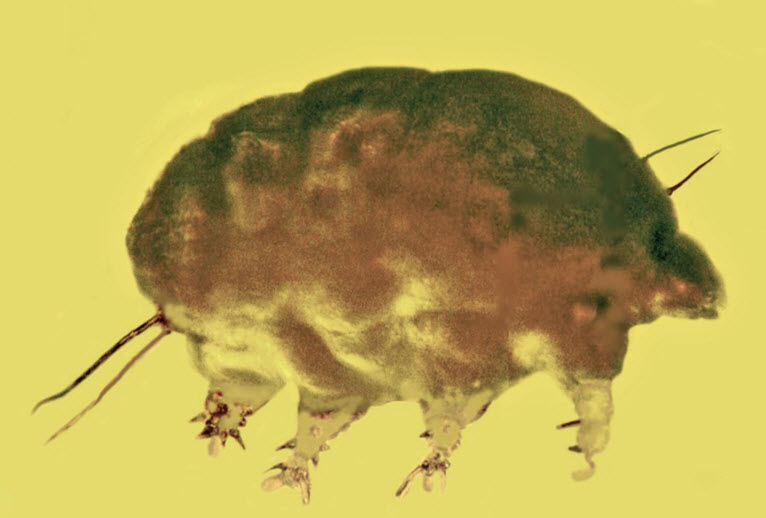Mold Pigs: Tiny Invertebrates From 30 Million Years Ago
Posted on October 8, 2019

Mold pigs were tiny invertebrates that inhabited Earth about 30 million years ago. They were discovered in fossils preserved in Dominican amber. They are a newly discovered family, genus and species of microinvertebrate.
The creatures were about 100 micrometers long. Mold pigs increased in size by molting their exoskeleton. They fed mainly on fungi. They also ate small invertebrates. They had flexible heads and four pairs of legs.
The extinct animals are described in a research paper by George Poinar Jr. of the Oregon State University College of Science. Their scientific name, Sialomorpha dominicana, is derived from the Greek words for fat hog (sialos) and shape (morphe).
Poinar says in the announcement, "Every now and then we'll find small, fragile, previously unknown fossil invertebrates in specialized habitats. And occasionally, as in the present case, a fragment of the original habitat from millions of years ago is preserved too. The mold pigs can't be placed in any group of currently existing invertebrates - they share characteristics with both tardigrades, sometimes referred to as water bears or moss pigs, and mites but clearly belong to neither group."
Poinar also says, "No claws are present at the end of their legs as they are with tardigrades and mites. "Based on what we know about extant and extinct microinvertebrates, S. dominicana appears to represent a new phylum. The structure and developmental patterns of these fossils illustrate a time period when certain traits appeared among these types of animals. But we don't know when the Sialomorpha lineage originated, how long it lasted, or whether there are descendants living today."
A research paper on mold pigs was published in Invertebrate Biology.
Image: George Poinar Jr.
